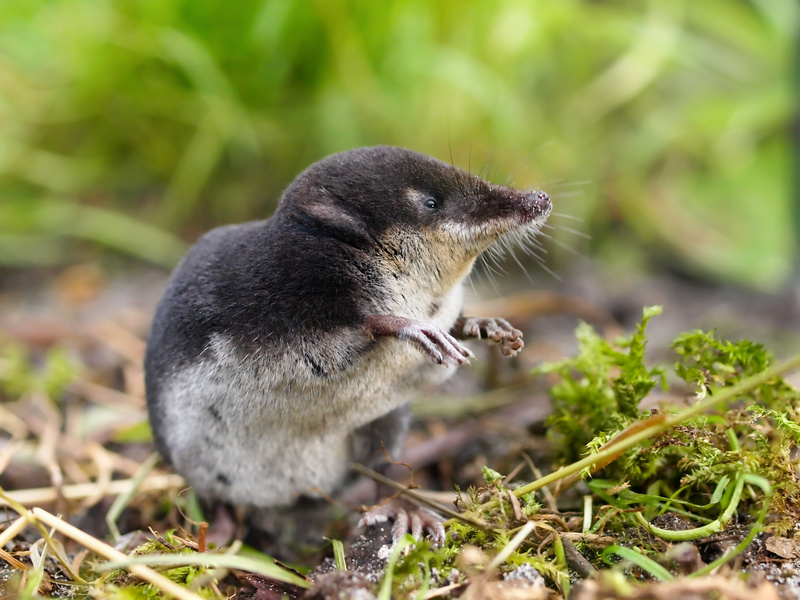22 March 2018
Whether on a boat trip, during a bike ride or a stroll, the exceptional diversity of the Marais poitevin Regional Natural Park is full of surprises and amazing encounters. That includes the water shrew which turns out to be the biggest shrew in Europe.
Neomys fodiens, the Water shrew of the Marais poitevin
The Eurasian water shrew, also known as Neomys fodiens, is recognisable by its long head and its coat (dark brown on its back, white on its belly). Contrary to what its name might suggest, it’s a semi-aquatic mammal that can grow up to 20 cm and lives along the rivers and streams. The Marais poitevin and its uncountable canals is thus an ideal place for this animal.

The Rare and Elusive Eurpean Water Shrew (Neomys fodiens) sitting on it’s Hind Legs
The wild space of the Marais poitevin is perfect for the water shrew to dig its burrow, usually along a bank. It uses to get out at dusk and during the night to seek its preys abounding in the ecosystem of the Marais poitevin. The water shrew hunts insects as well as snails and worms and can also attack bigger preys like frogs and small fishes thanks to its venomous pointed teeth. Thus, each day the water shrew of the Marais poitevin absorbs more than its weight in food and can stock it for difficult hunting periods.
DISCOVER THE EXCEPTIONAL NATURE OF THE MARAIS POITEVIN!
Preserve the biodiversity of the Marais poitevin
However, environmental changes cause more and more the destruction of its natural habitat and the decline in prey populations, which pushed the National Museum of Natural History to classify it as a vulnerable species.
Moreover, its relative scarcity makes it difficult to collect information on the water shrew and prevents international organisations to recognise this animal as a fully endangered species. The data collected in the Marais poitevin in the 1980s have made it possible to classify the Water shrew as a vulnerable species in France.
Since 2015 a study on the Water shrew has been conducted in the Marais poitevin Regional Natural Park to observe and survey the population thanks to new genetic tools. It has concluded that individuals are located in the whole Marsh, included in salted areas like the Aiguillon Bay.
Despite this, the relatively low number of individuals betrays a deterioration of the water shrew’s natural habitat and stresses the need to preserve the environmental quality of the Marais poitevin.
DON’T HESITATE TO READ OUR OTHER ARTICLES ON THE FAUNA AND THE FLORA OF THE MARAIS POITEVIN!
Image source: commons.wikimedia.org











